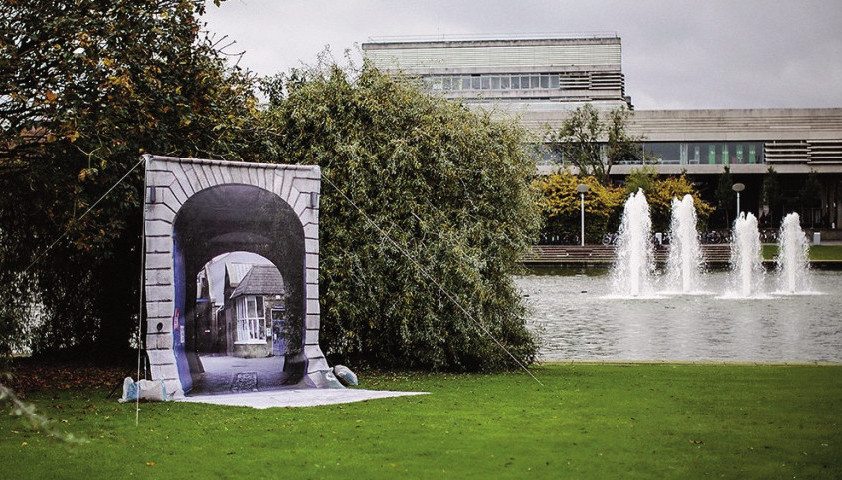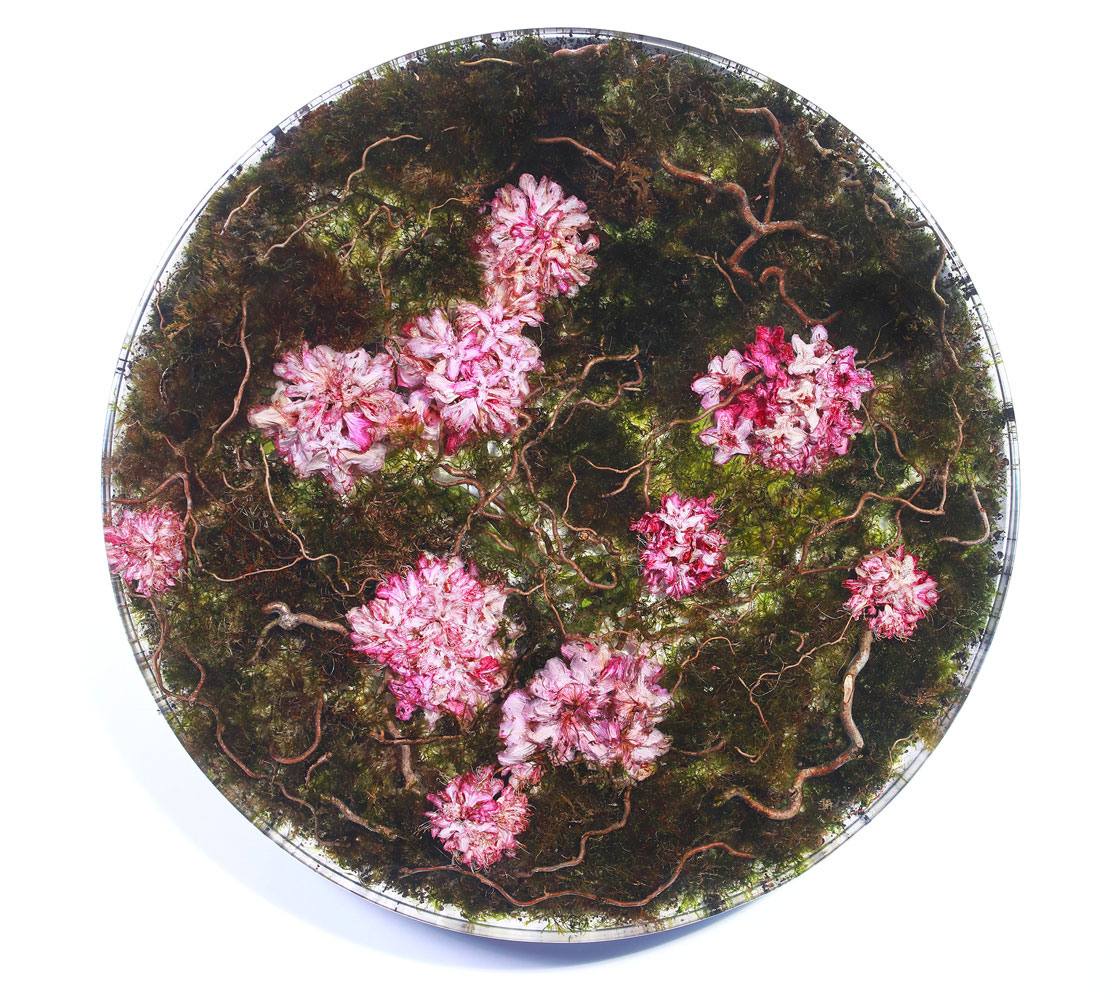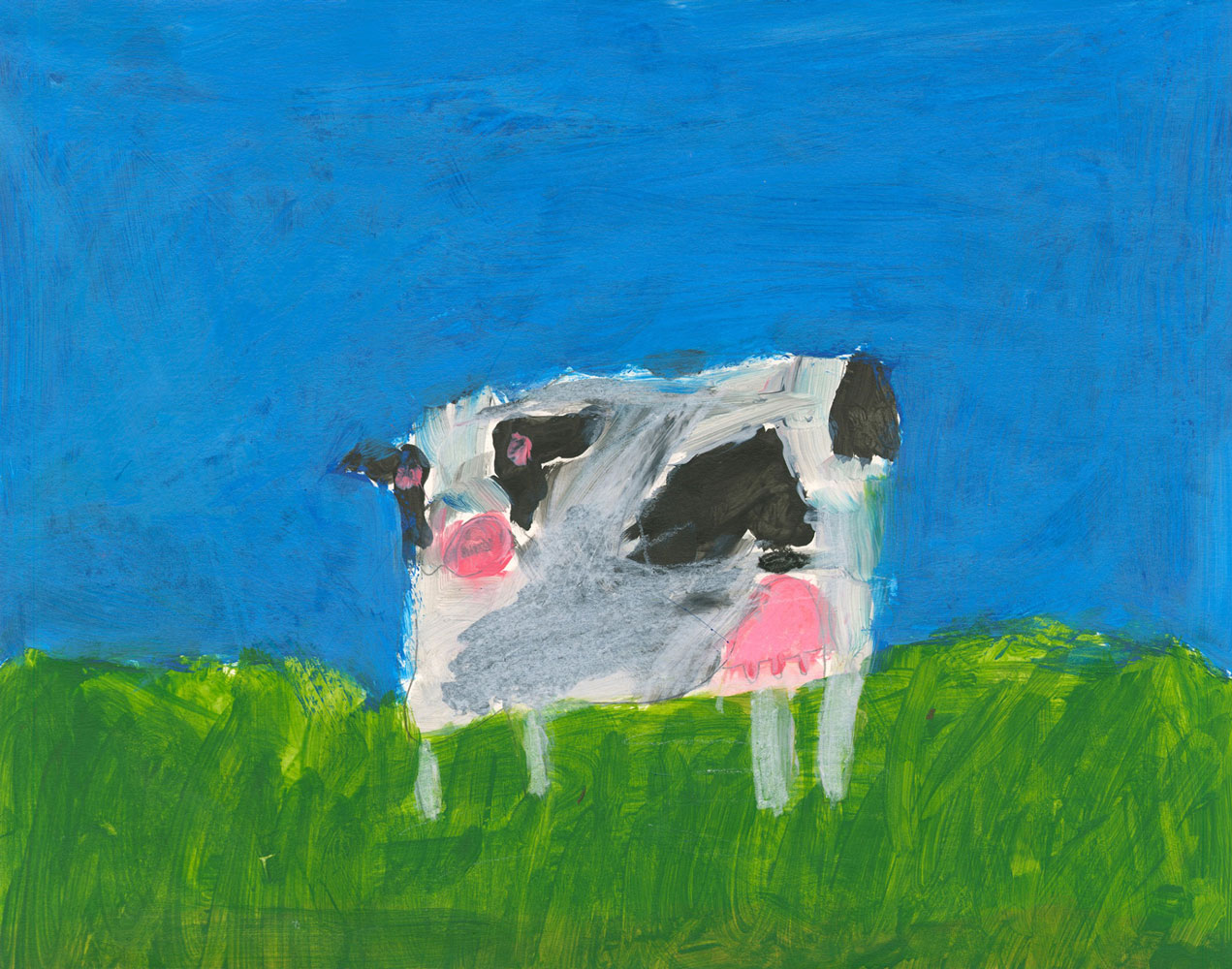‘The scenario of establishing collegiate clusters based on economics and geography to the detriment of pedagogy has all the attributes of a shiver looking for a spine,’ writes Gerry Walker

Avril Corroon. Printed image of the entrance to the National College of Art and Design on aerated PVC, supported on a photographic background stand at University College Dublin 2014. Photo Al Higgins
It would be an understatement to suggest that NCAD has serious internal problems at this point in its evolution. As a new academic year begins, the college faces the prospect of having to come to terms with the recent loss of the Director, a serious space deficit, staffing shortages, financial shortfalls, issues of governance, multiple course changes, challenges to its traditional pedagogy which threaten to undermine what is often euphemistically referred to as staff morale, and a new College Board largely unfamiliar with the historical and contemporary imperatives it needs to address.
NCAD chose to hitch its wagon to University College Dublin’s star as a consequence of the proposed dissolution of the National University of Ireland (HEA) in 2010. This was the body responsible for awarding NCAD degrees. Prior to this NCAD had been a constituent college of the NUI since 1996. Thus, a strategic alliance was formed which was intended to fuse the best of both institutions and reinvigorate their approach to third-level education. No set of objectives could have been more vague. The closest pitch for compatibility made by NCAD in their prospectus literature was the assertion that problem-centred learning in scientific, social and humanistic inquiry closely resembled studio-based learning. On this utterance the overarching rationalization and justification for the alliance was established.
Coupled to this endeavour was the fond but curious expectation that such a conjunction would enhance relationships with the community of the city of Dublin. The precise meaning of this intention still remains as aspirational as it is unclear.
The rationale underpinning the strategic alternate alliance was a matter of economics and geography. Pedagogy was not a major consideration. At the core of the enterprise was a May 2013 decision by the HEA to create a set of national/ regional educational ‘clusters’ which incorporated compatible disciplines. Thus in the Dublin /Leinster region, the so-called Pillar 1 colleges included UCD, TCD, NCAD and IADT Dún Laoghaire. The priority goals of the HEA were to facilitate better pathways between institutions, coordinate academic planning and reduce duplication of courses and resources. The policy facilitated and favoured the development of collegiate linkages up to and including mergers, a point not overlooked in NCAD promotional material.
At the beginning of the current academic year the NCAD Director Declan McGonagle resigned his post after seven years, citing personal reasons. During his tenure he attempted to initiate curriculum developments, expand courses and student numbers, increase studio spaces and initiate a strategy to enhance relations with peer institutions. This was a monumental undertaking and as such it enjoyed uneven levels of success. Most radically the curriculum change envisaged a move from a 4-year primary degree course to a 3+2 year course leading to MA qualification. There were serious implications for all areas within NCAD as a result of this strategy.
As a consequence of recent budgetary cutbacks the college had to shed a number of part-time posts. Traditionally NCAD relied heavily on a variety of part-time lecturers. This system provided a diversity which was very much a positive aspect of the pedagogic experience. Most courses were structured to factor in the input of part-time personnel and were sustained on that premise.
To compensate for budgetary shortfalls additional student numbers were facilitated and this in turn put additional pressures on reduced staff numbers to deliver, if not enhance, an expanded curriculum. When the further demands on space provision – studios workshops and lecture theatres are factored in, the essential elements for a perfect institutional storm began to form.
The question to be asked is whether a university is the appropriate partner institution for an art college?
Under the name of curriculum development and in addition to the reduction in the length of the degree programme, a shift in thinking occurred which sought to integrate the areas of Fine Art and Design, which hitherto had been perceived as discrete disciplines. Integration brought with it difficulties of course description, definition and application. Insufficient thought was given to the re-formulation of courses which had functioned reasonably well on their own terms but which jarred when hastily brought together in spaces ill- equipped for the task and serviced by a reduced cohort of specialist staff.
Up to quite recently NCAD saw a number of its key course provisions being taught in a refurbished general store (Frawley’s) on Thomas Street and holds a portion of its Art History lectures in the nearby St Catherine’s Church. Despite the acquisition of a new space in the Rupert Guinness complex, the campus development remains fragmented and piecemeal. Policy remains reactive rather than proactive. This was the context in which the relationship with UCD was forged.
At one point in the evolution of the UCD/NCAD alliance consideration was given to the physical removal of the latter campus, or parts thereof, to the leafy suburbs of Belfield. This was vehemently resisted by NCAD staff and students. It was supported by some elements of the management body. The plan was ultimately dropped on the grounds that UCD in Belfield was remote from Dublin city, with no facilities such as public and private galleries for arts students to access. Space requirements other than lecture theatres would have been problematic. There was also the recognition that establishing compatibility would be akin to an exercise in force-welding together academic associations which did not conceptually co-exist in reality, despite aspirations and assertions to the contrary. No amount of Edu-Speak could conceal these facts.
McGonagle’s resignation was an unwelcome surprise for the new incoming Board and must inevitably have added to the organizational disarray which currently prevails. NCAD receives a considerable level of funding from the State. In the eight years ended December 2013 the amount was in excess of €100 million. Recently the College was hauled before the Public Accounts Committee which issued a report in August 2014 insisting that financial statements be prepared for the previous three years. Senior management accountability was deemed to be deficient. In the wider sphere the responsibility for collegiate policy and compliance rests with the HEA, who were also strongly censured in the report for their inactivity and lack of oversight. Light-touch regulation is the perennial leitmotif of Irish public institutional life.
In essence, the scenario of establishing collegiate clusters based on economics and geography to the detriment of pedagogy has all the attributes of a shiver looking for a spine, and the strategic alliance policy is coming under increasing scrutiny to determine fitness for purpose. Within NCAD today there is a body of opinion among management and staff, which appears to favour an alliance with TCD. Geographical proximity, gallery facilities, a strong Fine Arts department, and access to, and expectation of, high-value prestigious outcomes form the core of the attraction.
The question to be asked is whether a university is the appropriate partner institution for an art college? In reality the problem comes down to comparisons of like with unlike. If HEA cluster theory is to be followed then NCAD’s most obvious potential merger candidate institution for the Eastern region would suggest the IADT Dún Laoghaire – a thriving art institution in its own right. If this were to be considered, such a merger would include minimizing resources duplication, and emphasizing institutional strengths. The net effect of constructing such a merger would be the establishment of a purposeful dynamic critical mass without the degradation of significant mutual assets, for a discipline whose formal pedagogic structures are presently dispersed and diluted. It is not unreasonable to assert that NCAD’s desire for association with the university sector is indicative of a sense of inferiority. Despite the institutional shortcomings discussed above, NCAD manages to maintain a position of excellence, sustained by incredibly creative staff and students. It should realize that validation in the widest sense is not an inevitable consequence of affiliations derived from piggybacking the prestige of other institutions within the groves of academe.
Gerry Walker is a freelance writer and critic.


